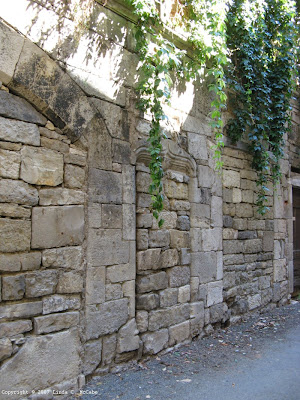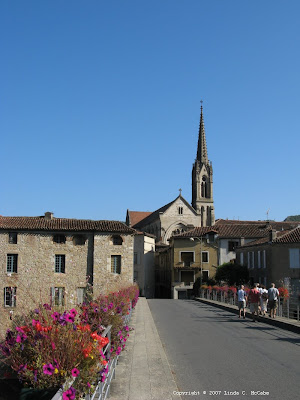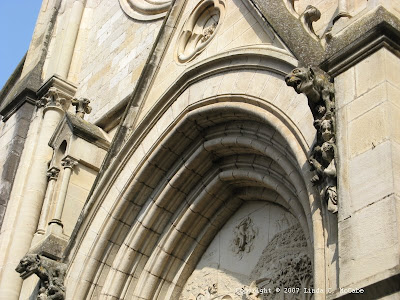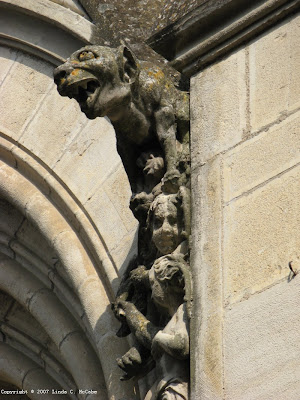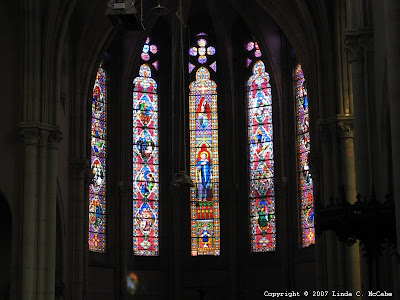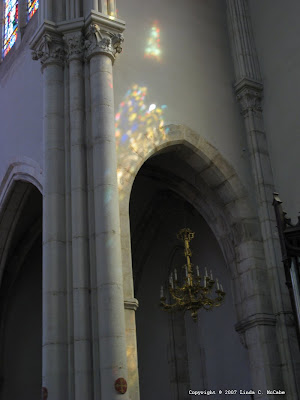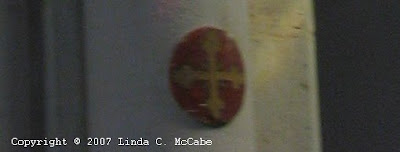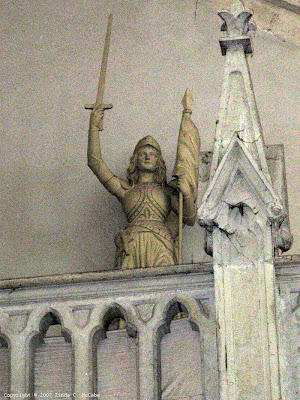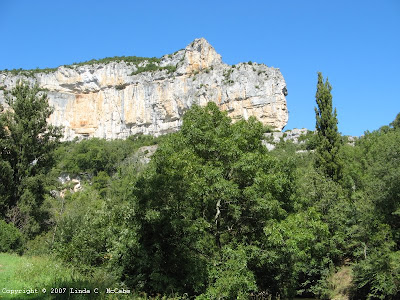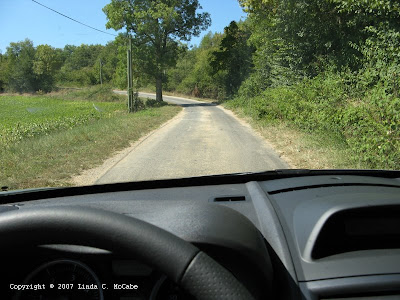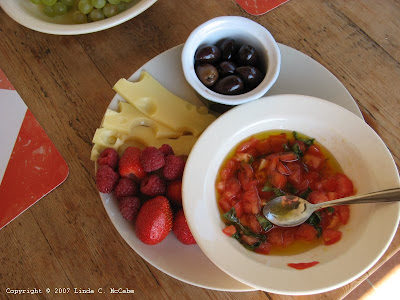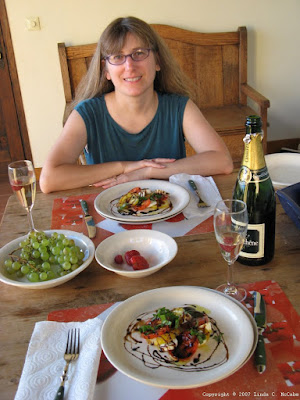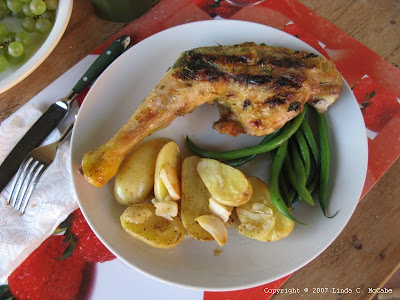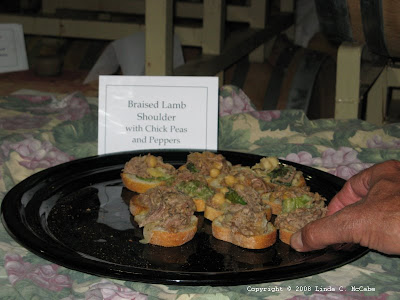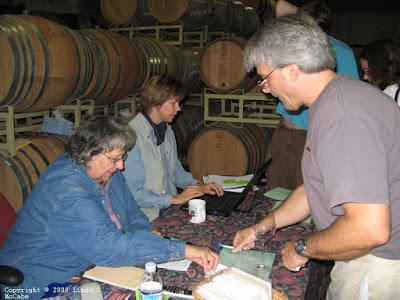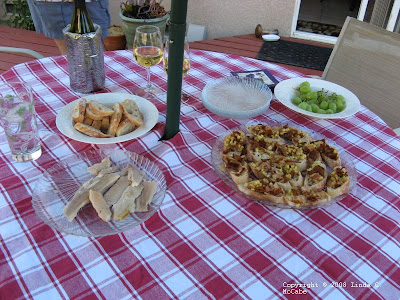First off: Demon Sex.
Erika Mailman updated her blog with a post discussing the sexual demons known as Incubi and Succubi and includes passages from the Malleus Maleficarum.
Her book The Witch's Trinity will be out in paperback in October, so if you have not read it yet - be sure to pre-order a copy today while you are thinking about it. Her novel was a Bram Stoker Award finalist and San Francisco Chronicle Book of Note of 2007.

Tess Gerritsen has a forthcoming novel The Keepsake that deals with murder and mummies. I had the pleasure of talking with Tess at the San Francisco Writers Conference this past February along with my friend Cindy Pavlinac. We chatted about her fascination with Egypt and archaeology as well as the process of mummification.
Tess decided to commission a book trailer to be made for The Keepsake and it is fabulous. Check it out:
She discusses some hidden benefits of book trailers on a guest post at the blog Murderati as well as how she went about commissioning the trailer to be made. Tess mentions that as a consequence of this filming she now has shrunken heads and rubber corpses occupying space in her garage. Hey, she will be all set for Halloween this year.
Onto a forthcoming book from another big time author is Katherine Neville's long awaited sequel to her classic novel The Eight. If you have never read that book first published in 1988, then you are in for a treat.
As described on her website:
Katherine Neville’s groundbreaking novel, The Eight, dazzled audiences more than twenty years ago and set the literary stage for the epic thriller. A quest for a mystical chess service that once belonged to Charlemagne, it spans two centuries and three continents, and intertwines historic and modern plots, archaeological treasure hunts, esoteric riddles, and puzzles encrypted with clues from the ancient past. Now the electrifying global adventure continues, in Neville’s long anticipated sequel: The Fire.
It is more than that, The Eight is a novel about the complex game of chess and she weaves in the historical figures of Charlemagne, Talleyrand, Robespierre, David, Sarat, Napoleon, and Moammar Qaddafi. There are two parallel stories being told. One takes place in the 1970s in New York City and later in Algeria, the other timeline is during the French Revolution. In both time periods, there is a deadly game being played in order to secure the pieces of a chess set that once belonged to Charlemagne. The novel combines murder, chess, Charlemagne, the French Revolution, literary alchemy, and Fibonacci Numbers. I mean, what's not to like?
Katherine has updated her website and it looks all bright and shiny. I am excited to see the list of signings to promote her forthcoming novel The Fire due out in October because she will be coming to my area. I look forward to meeting her and getting a signed copy.
Now to go from the sublime to the absurd.
John Goodman has returned to filming the adaptation of the novel Pope Joan. It took a lawsuit to accomplish this feat. You see, he decided that a supporting role in the movie Speed Racer might be better for his career than playing Pope Sergius in an epic historical move.
Speed Racer.
He chose to be in Speed Racer. Over Pope Joan.
Wow.
Of course hindsight is 20/20 and Speed Racer was a clunker, so I cannot help but think he made a boneheaded choice to back out of a signed contractual agreement to be involved in what turned out to be a lousy movie.
(I am grateful that my father-in-law sacrificed a few hours time to take my son to see Speed Racer because I did not want to suffer in the movie theater like I did a few years ago when I endured having to watch Home on the Range. Things you do for a child or a grandchild.)
Back to discussing Pope Joan the movie. I met Donna Woolfolk Cross, the author of Pope Joan, ten years ago when she was gracious enough to do a benefit book signing for an organization I headed at the time. She told me then that there were plans of a movie being made and she was given the opportunity to adapt her novel into a screenplay and she had just started working on the script. I gave a few suggestions of condensing early events into montages to get to the heart of the story, then I told her to be prepared that it might take longer than she expected. I had previously been interested in writing screenplays and so I had learned a lot about the movie industry and knew that it was a fickle business. I warned her that it could be a long drawn out process, and unfortunately for her, I was right.
I hope that the project is completed before long and that the film lives up to all her expectations.
Speaking of film delays...I am wondering about the status of the movie Love and Virtue. The production company's website has not been updated in a long time, and my Google Alert on the subject does not turn up much new information. I have seen some mention in regard to articles written about various actors associated with the production and it seems as if they had filmed the movie, however, I do not see any specific date as to when it will be released.
I did find an ominous posting on a message board for IMDb which does not seem all that hopeful to see the release of this movie anytime soon. That's a shame, because there are not many movies based on the legends of Charlemagne and even though in my humble opinion I think some of the actors are too old to play the part of specific characters...I still would like the movie be a success if only to spur interest in the epic poems of Orlando Furioso and Orlando Innamorato which inspired the storyline.
There are a few operas based on this luxurious source material and at least one play, but the legends of Charlemagne are woefully underserved in comparison to the legends of King Arthur.
For the record those operas are:
Alcina by Handel
Ariodante by Handel
Orlando Furioso by Vivaldi
and the play is Bradamante by Robert Garnier.
In other news, several of my friends have done interviews recently. Here are some links to those:
Agent Nathan Bransford was interviewed for a podcast by Bleak House as was as retired homicide detective Lee Lofland. Here is a link to Lee's interview.
Jeff Sypeck was interviewed by Julie K. Rose about songs he listened to which inspired his writing the book Becoming Charlemagne. The transcript of the interview is here and a podcast of Julie discussing the interview is here.
Then in somewhat old news, there is the controversy about Random House canceling the publication of the novel The Jewel of Medina. For those interested in reading a sample of the book for yourself, the blog Smart Bitches, Trashy Books contacted the author Sherry Jones and has posted the Prologue online.
For those interested in reading a Muslim's perspective on the controversy, here is a post by blogger Mike Ghouse entitled Self-Censoring Muslims in which he responds to an editorial published in the Washington Post on the subject.
And lastly for now...the blog War and Game posted a review of the book The Moral Treatment of Returning Warriors in Early Medieval and Modern Times. I had never heard of this book before, has anyone else read this book?
Go ahead and leave your thoughts about any of these disparate subjects. Hopefully you found something intriguing.
Linda




